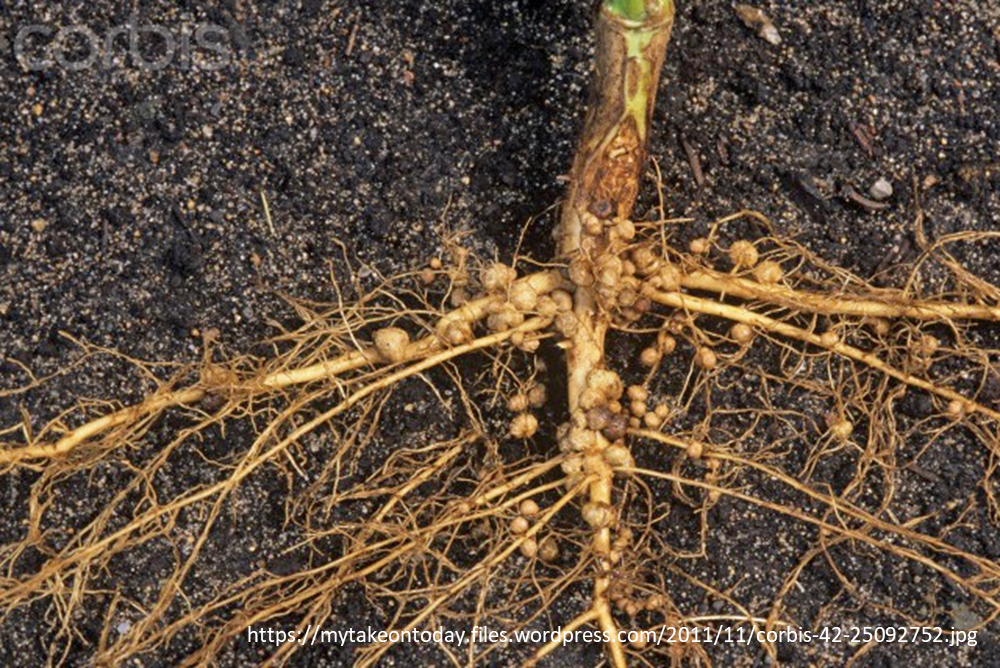Nitrogen (N) is one of the major nutrients that all crops need and it is a very expensive nutrient to apply to your soil, especially this year. As many of you would know, plants under the legume category do not require as much N fertilizer since they can fix their own N from the air via nodules on their roots. But how do nodules form and how do they work? In this week’s edition of Growing Possibilities, we will be looking at how root nodules are formed and how they can fix N.
Most legumes have a special relationship with certain rhizobacteria that can fix N. There are a variety of rhizobacteria that can fix N, but each legume species only has a special symbiotic relationship with one rhizobacterial species. These rhizobacteria live freely in the soil but only can fix N when they are living in root nodules. There are a variety of shapes and sizes for nodules, which depends on the plant and bacterial species. They can be spherical, long, flat, grooved, and small as a pinhead, or grow up to 1 centimeter in diameter (1).
So we know that legumes have root nodules with bacteria inside of them, but how do they get inside the root? While the plant roots are growing, they are releasing compounds into their environment. The rhizobacteria recognize these compounds and respond by releasing their own compound called Nod factor. The Nod factor causes the root hair to curl around the rhizobacteria. Once the root hair is completely curled around the rhizobacteria, the rhizobacteria enters the root hair and makes a tube called the infection thread. Once inside the infection thread, they begin to replicate and move towards the base of the root hair (2).
When the rhizobacteria reach the base of the root hair, they replicate rapidly and so does the root cells surrounding them. Like a baby growing in the womb, the bacteria grow and replicate rapidly surrounded by the nodule cells, which grow rapidly to accommodate the growing bacteria. The nodule cells provide shelter and nutrients for the bacteria so they can grow and thrive. But unlike a baby, the bacteria provide N for the plant and will remain in the nodule until the plant dies. Once the nodule is formed, two enzymes are created to facilitate N fixation. First, leghaemoglobin is made to reduce the oxygen in the nodule. When the leghaemoglobin is working, it is a pink colour, that’s why active nodules are pink to red in colour! Second, nitrogenase is made and it begins to fix N once the oxygen level in the nodule is reduced. These enzymes will continually work to facilitate N fixation until the plant dies (1).
Although the rhizobacteria specific for your legumes can be found in the soil, there may not be enough to produce lots of nodules. That’s why applying inoculants like XiteBio® SoyRhizo® (for Soybeans) and XiteBio® PulseRhizo® (for Peas, Lentils & Faba beans) to your seeds or in the furrow to ensure you have plenty of nodules on your plants to fix the required N that the plant needs!
References
- https://gcwgandhinagar.com/econtent/document/1587178867UNIT%204.1%20Formation%20of%20Root%20Nodules%20in%20Legumes.pdf
- https://www.ncbi.nlm.nih.gov/pmc/articles/PMC419923/


